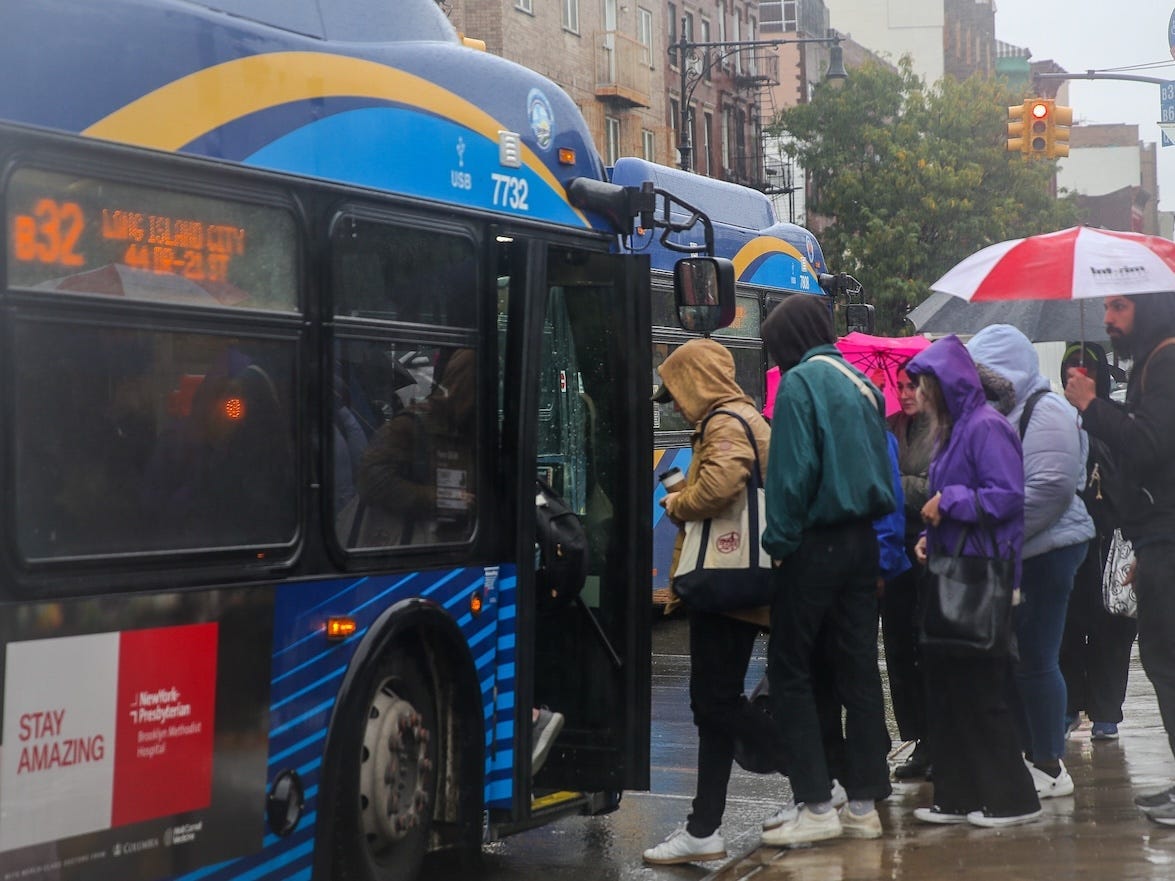Kansas City Tested Zohran Mamdani's Bold NYC Transit Idea—Here’s How It Could Transform Bus Rides in the Big Apple

Zohran Mamdani, New York City's Democratic mayoral nominee, is championing a bold policy proposal that could reshape urban transit: free public bus rides. His campaign has placed this idea at the forefront of his platform, arguing that eliminating fares will ease financial burdens on low-income residents while improving efficiency and safety across the city’s sprawling bus network.
Why Free Buses?
Mamdani’s push for fare-free buses stems from a belief that public transportation should be universally accessible, especially for those who rely on it most. With approximately 2 million daily riders, New York City’s bus system disproportionately serves lower-income communities. Proponents argue that removing fares would not only provide economic relief but also streamline operations by reducing conflicts between drivers and passengers over unpaid fares — a common source of violence against transit workers.
The argument gains weight from a recent one-year pilot program initiated in 2021, during which Mamdani served as a state legislator. Under this initiative, one bus route in each of the five boroughs eliminated its $2.90 fare. The results were telling: weekday ridership increased by 30%, and weekend ridership jumped by 38%. Notably, assaults on bus drivers fell by nearly 40%, suggesting a strong correlation between fare collection disputes and rider-driver altercations.
Lessons From Other Cities
New York isn't alone in exploring fare-free transit. Several U.S. cities have experimented with similar models, offering insights into both the benefits and challenges of such policies.
Kansas City became the first major U.S. metro to adopt fully free bus service in 2019. The move led to a 39% drop in reported safety incidents during the program’s first year. However, budget constraints eventually forced city leaders to reimpose a $2 fare starting in July 2023 to prevent service cuts and layoffs.
In Boston, a limited fare-free pilot launched in 2022 on select routes yielded positive outcomes. Riders saved an average of $35 per month, according to the Boston Transportation Department. Similar programs in smaller cities like Tucson, Arizona, and Alexandria, Virginia, have shown promise, though none match the scale of Mamdani’s vision for New York.
Joy Mart, a software engineer and activist in Kansas City, credits the city’s former free bus system with helping her navigate a period of unemployment. “It was just so helpful, since you know, we're counting pennies at that point,” Mart recalled. She previously paid either $1.50 per ride or $50 monthly for a pass before losing her job.
Mart now works with Sunrise Movement KC, an advocacy group pushing for continued zero-fare transit despite growing fiscal pressures. The organization emphasizes equity, arguing that fare-free systems are essential for people seeking employment or living on fixed incomes.
Funding Challenges and Political Realities
Despite these successes, implementing a citywide fare-free bus system in New York presents significant hurdles. The Metropolitan Transportation Authority (MTA), which operates the city's subways and buses, estimates the annual cost at around $700 million — a figure critics say lacks sustainable funding.
Currently, the MTA relies heavily on fare revenue and state subsidies to maintain operations. Without alternative funding sources, many experts question whether fare elimination would compromise other critical needs, including infrastructure upgrades and service reliability improvements.
Mamdani has proposed partially financing the plan by collecting overdue fines from landlords, though specifics remain unclear. His campaign did not immediately respond to requests for comment on how exactly this would work or how much revenue it might generate.
Dr. Zhan Guo, a professor of urban planning and transportation policy at NYU, acknowledges the appeal of fare-free transit but urges caution. He suggests starting with a broader expansion of the existing pilot program rather than committing to full-scale implementation without sufficient data.
“This idea is very appealing to the general public, but I also feel there are actually many other options we haven't fully explored or utilized,” Guo said.
Still, he praised Mamdani for bringing fare policy into the spotlight. “I like the fact that public transit, bus fares, such a very technical topic, became so visible in the mayor's campaign,” Guo added. “This is actually a wonderful opportunity to engage the public.”
Broader Impacts and Equity Considerations
Beyond cost savings and safety, advocates highlight the potential for fare-free buses to improve mobility in underserved neighborhoods. Many bus routes serve areas with limited subway access, where low-income residents often face long commutes and high transportation costs.
Although the MTA offers discounted fares through its Fair Fares program, only about 38% of eligible individuals participate. Meanwhile, nearly half of all bus riders evade fares altogether, costing the agency hundreds of millions annually in lost revenue.
Some supporters also point to the Staten Island Ferry, which has operated fare-free for nearly two decades due to the high cost of fare collection. They argue that eliminating bus fares would similarly reduce administrative overhead and allow faster boarding times, leading to more efficient service.
Danny Pearlstein, a spokesperson for the grassroots transit group Riders Alliance, sees no contradiction between fast and free buses. “We should be able to have both buses that move and buses that people can afford and that are worth paying for, even if not everyone or no one has to pay for them,” he said.
As Mamdani moves forward with his campaign, the debate over fare-free transit is likely to intensify. Whether or not his proposal becomes reality, it has already sparked a crucial conversation about accessibility, affordability, and the future of urban mobility in New York City.
Post a Comment for "Kansas City Tested Zohran Mamdani's Bold NYC Transit Idea—Here’s How It Could Transform Bus Rides in the Big Apple"
Post a Comment